Art reviews: Frances Walker | Bill Scott | Will Maclean & Shaun Fraser | Leon Morocco
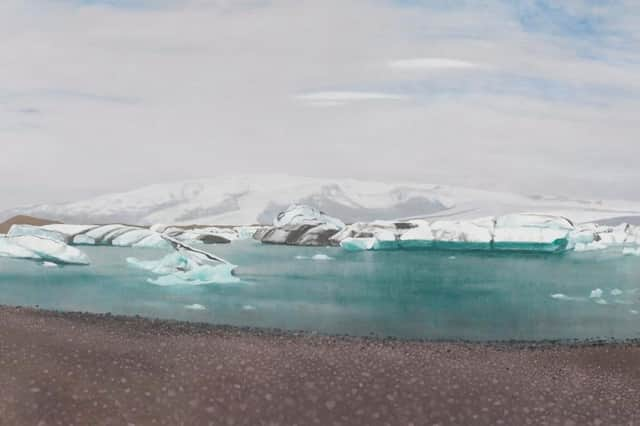

Frances Walker: Travelling On, Royal Scottish Academy, Edinburgh *****
Bill Scott, Royal Scottish Academy, Edinburgh ****
Will Maclean and Shaun Fraser, Owners of the Soil, Fine Art Society, Edinburgh ****
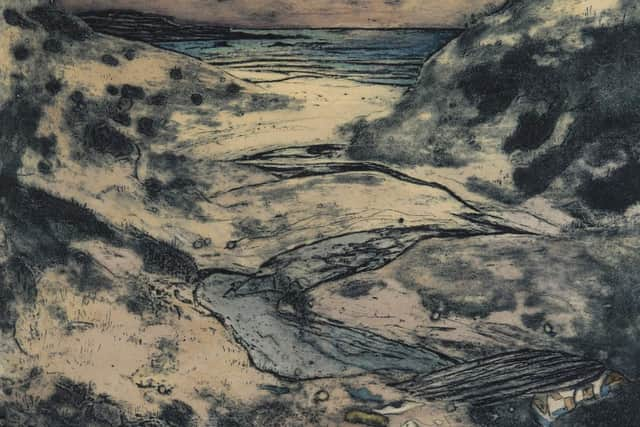

Leon Morocco: Après Midi, Open Eye Gallery, Edinburgh ****
Advertisement
Hide AdLast year there should have been an exhibition to celebrate Frances Walker’s 90th birthday. Events intervened and the show was postponed. But then events intervened again. The exhibition was planned for the RSA’s downstairs galleries along with a memorial show for the late Bill Scott, former president of the RSA, who died in 2012. A flood in the building made that impossible, and so both shows were moved upstairs to the RSA main galleries. Clearly some higher power thought that these two artists deserved the grander space, as they certainly do.
Frances Walker’s exhibition, aptly titled Travelling On as, indefatigable, she hasn’t slackened her pace, follows on Joan Eardley’s centenary shows and what Walker has in common with Eardley is a determination to stick to her own way of doing things; to take note of what is going on in the world, but not be seduced by fashion to become a follower of somebody else’s ideas. Her independence of mind is there in every mark of the beautiful draughtsmanship that underpins everything she does.
There are around 30 works in the show. The biggest is her great, eight-panel folding screen, Atlantic Watch. More than 20 feet across, it is a view looking out from Tiree towards the Western Approaches and there is a memory of the grim battle of the Atlantic in the storm blowing in to block out the sun beyond Tiree’s green shore.
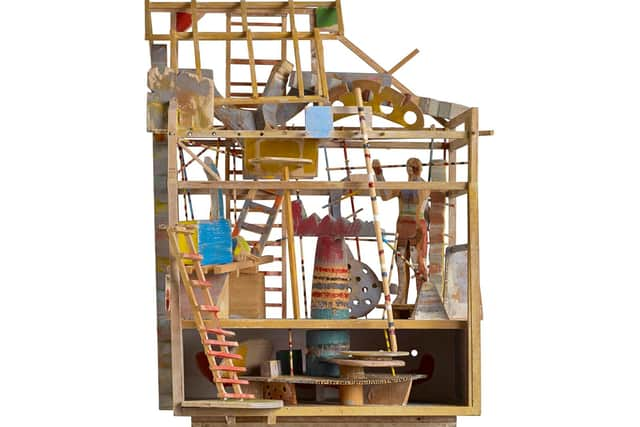

Crossing to Finlaggan is not quite as big, but is still two and a half metres across. It too is a landscape to invite reflection. On Islay, this innocent lochside and raised walkway mark the site where the Lords of Isles who ruled the islands and the west of Scotland held their council. Alongside these and other paintings from across her career there is a variety of superb prints. All her prints are made at Peacock Printmakers where she was a prime mover and founder member.
There is a symbiotic relationship between her beautiful drawing and printmaking, but her prints are not necessarily small beside the paintings. A three-part lithograph and screen print of the standing stones of Calanais is seven feet across. Even some of her etchings, like Storm Beach Boreray, for instance, a wide horizontal composition, are more than a metre wide. She works in screenprint, lithograph, etching, monoprint and collagraph and uses them in combination too. Rocks and Sea, for example, is a superb monoprint from 1988 with a composition like a Japanese print. Collagraph, effectively a print from a collage, is a method she has made her own. Indeed in her self-portrait she inhabits one example. In it, she is seen from behind setting out along the rocky beach to paint. She looks at home. Her etchings are outstanding, too. There are examples here from the Antarctic voyage she made ten years ago and a beautiful view through the window of her cottage on Tree. But she says herself that she feels a special affinity with the rocks and shore and that shows above all in etchings like Rockpool, or Wild Shore, Tiree. In the latter especially, her intense, wiry drawing of the intricacies of the geology captures something that few artists have seen and fewer have been able to record. It is a sense of the energy in the rock. It is not dead and inert. Just as James Hutton understood it for the first time 250 years ago, we see it is a living record of colossal, constant change over countless millennia. It is a truly remarkable achievement.
Where Frances Walker gives us apparently straightforward images that invite reflection, Bill Scott is enigmatic. We have to unravel the mystery in his work. To help us here, there is an illuminating essay in the catalogue by Andrew Patrizio who studied in the sculpture department at ECA where Scott taught for nearly 40 years. Scott was a very productive and original artist, but his work is not as well known as it should be. This major memorial show is the first opportunity we have had for a long time to contemplate it in depth. Trained at Edinburgh College of Art, Scott then studied in Paris and his early work is figurative in the tradition of Rodin and Maillol. It is impressive, but in Paris he clearly also took note of the work of Brancusi and learnt how forms can be self-assertive without being imitative. Enigmatic shapes with personality in this way, often in their own sculptural space, are a constant in his work from the seventies onwards.
Advertisement
Hide AdA series of carved wooden totem figures that he called Small Monuments are particularly striking examples. An existential take on the space we each inhabit was a constant preoccupation of the sculpture of Giacometti, another Paris-based predecessor. Scott took up this idea and developed it in works like Measuring Personal Space or House and Contents, the latter worked and reworked over 30 years. A favourite motif these and other similar works present are complex, cage-like structures in wood or bronze which suggest not only an inhabited space but also an internal mental space: images of how we inhabit the world.
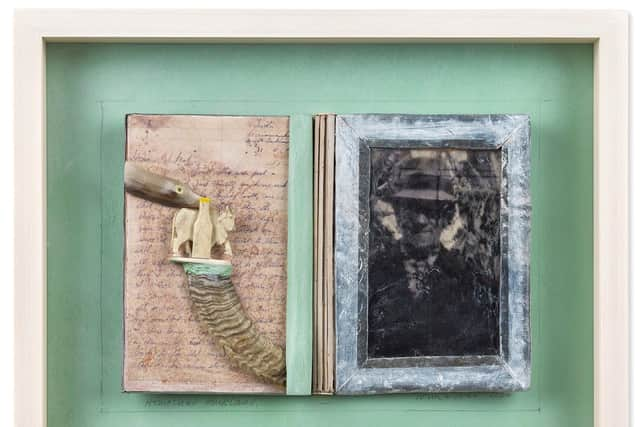

In Owners of the Soil at the Fine Art Society, Will Maclean is showing with Shaun Fraser (For symmetry, Maclean was taught by Frances Walker at Gray’s School of Art in Aberdeen.) The title of the show suggests how in the Highland Clearances, kinship and custom met property and lost the argument. The consequent Highland diaspora has been a constant theme in Maclean’s work. Here, he has created a series of deeply poignant works reflecting the experience of those who had to leave. Using letters, photographs and other fragments of memory each of these beautifully made small assemblages is dedicated to a particular individual, including members of his own family, exiled by circumstance to some far corner of the Empire. Such exile was usually permanent. With exquisite tact, Maclean captures the fragility of communication, the sense of total displacement, and the struggles of love and fading memory in what was effectively a living bereavement. Showing alongside, Shaun Fraser’s medium is peat. It forms where forests have been cut, or cultivation abandoned, the slow growing legacy of a devastated landscape. In its layers, growing a millimetre a year, peat does have a story to tell, but is not terribly eloquent in the telling. Fraser does his best mixing peat with ink or bitumen to create dark and moody abstract images, untitled, but called, in brackets, Landscapes. This Parcel of Land, apparently a lump of soil, or perhaps it is peat cast in bronze, does however state with eloquent economy how land becoming property gets a new kind of objective existence.
Advertisement
Hide AdFinally at the Open Eye, Leon Morocco’s boldly drawn and sunny pictures are a real tonic when August does its mean-minded best to dampen the Festival spirit.
Frances Walker and Bill Scott until 5 September; Will Maclean & Shaun Fraser and Leon Morocco until 28 August
A message from the Editor:
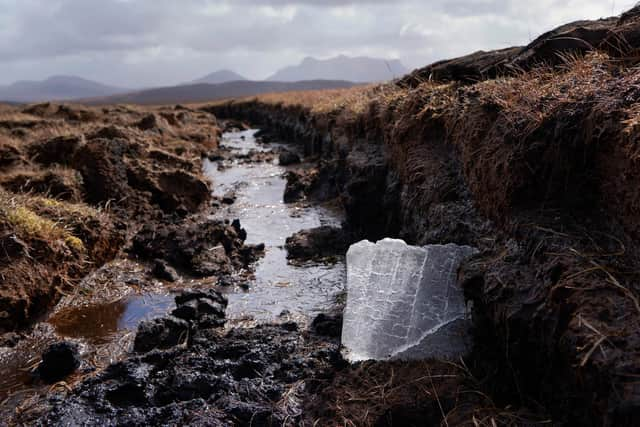

Thank you for reading this article. We're more reliant on your support than ever as the shift in consumer habits brought about by coronavirus impacts our advertisers.
If you haven't already, please consider supporting our trusted, fact-checked journalism by taking out a digital subscription at https://www.scotsman.com/subscriptions